
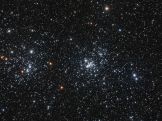
NGC 869 and 884 - The Double Cluster in Perseus199 viewsOver 7500 light-years away, these twin open clusters each contain over 300 blue-white supergiant stars; they are about 13 million years old.
|
|
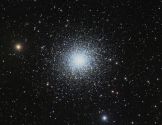
Messier 13 - Hercules Globular Cluster201 views145 light-years in diameter, consisting of several hundred thousand stars, this is the most famous globular cluster in the Northern Hemisphere and is about 22,000 miles from Earth.
|
|
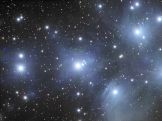
M45 - The Pleiades210 viewsA star cluster consisting of young, hot blue stars, about 130 light-years from Earth in the constellation Taurus. Only part of the cluster is shown here because it is too large to fit in the scope's field of view.
|
|
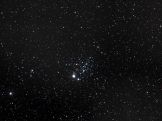
NGC 457 - The Owl Cluster244 viewsAn open star cluster in the constellation Cassiopeia, about 7,900 light-years distance from our Solar System. The "eyes" are the magnitude 5 star Phi-1 Cassiopeiae and magnitude 7 Phi-2 Cassiopeiae.
|
|
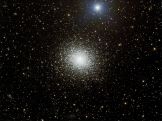
M5 - Globular cluster in Serpens179 viewsA globular cluster - one of the largest known, with a radius of 200 light-years - in the constellation Serpens. Distance from Earth is about 24,500 light-years.
|
|
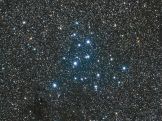
Messier 39 - Open Cluster in Cygnus205 viewsAn open cluster in the constellation Cygnus the Swan; distance 1010 light-years.
|
|
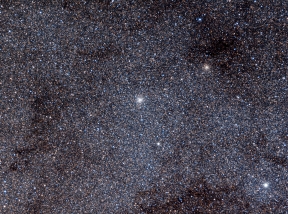
NGC 6522 - Globular Cluster in Sagittarius232 viewsPossibly the oldest star cluster in the Milky Way,[4] with an age of more than 12 billion years. Located in an area of the sky known as Baade's Window, named for the astronomer Walter Baade, who first recognized its signficance. Baade's Window is an area of the sky with relatively low amounts of interstellar dust along the line of sight from the Earth, allowing unobstructed observation of the center of our Milky Way galaxy.
|
|
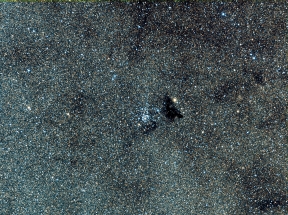
NGC 6520 and Barnard 86248 viewsNGC 6520 is an open cluster in the constellation Sagittarius, consisting of about 25 stars of magnitude 9-12. At its western edge (to the right in this image) lies the dark nebula Barnard 86 (B86).
|
|
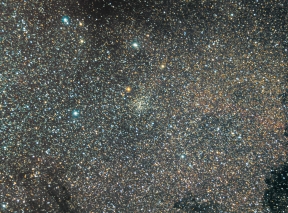
Messier 24 - "Small" Sagittarius Star Cloud311 viewsMessier 24 is an enormous cloud of stars lying in the Sagittarius arm of our galaxy, at a distance of about 10,000 light years from Earth. It is about 600 light years wide and occupies an area 90 arc minutes in apparent diameter. Among other objects, M24 contains the open cluster NGC 6603, which is at the center of this image. M24 is called the Small Sagittarius Star Cloud because there is another, larger star cloud south of it in Sagittarius, consisting of stars not obscured by the interstellar dust which blocks our view of the center of the galaxy.
|
|
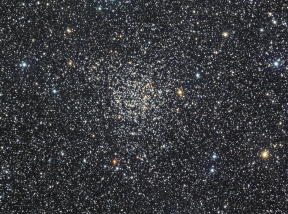
NGC 7789 - Open Cluster in Cassiopeia223 viewsDiscovered by Caroline Herschel in 1783 and nicknamed "Caroline's Rose" because of its supposed floral appearance. Distance from Earth is about 7,600 light-years.
|
|
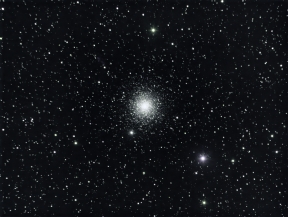
M15 - Globular cluster in Pegasus246 viewsContaining over 100,000 stars, 175 light-years in diameter, 33,600 light years from Earth. This is one of the oldest (12 billion years) and most densely packed globulars in the Milky Way.
|
|
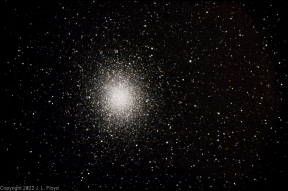
NGC 5139 - Omega Centauri Cluster245 viewsGlobular cluster in Centaurus, 17,090 light-years away. The largest-known globular cluster in the Milky Way, estimated to contain approximately 10 million stars, and a total mass equivalent to 4 million solar masses.
|
|
|
|

|